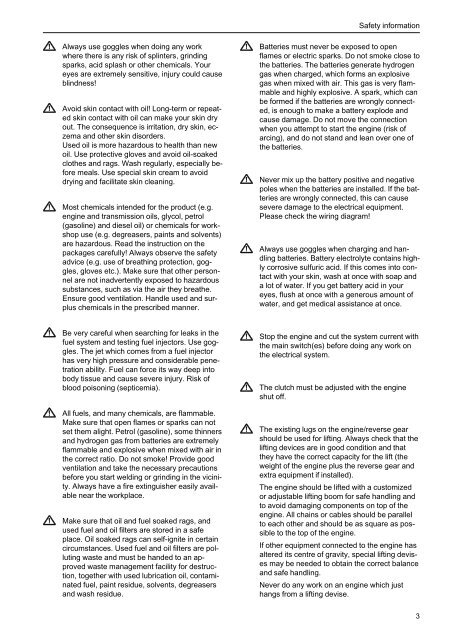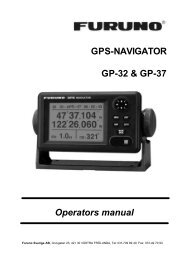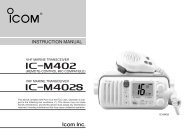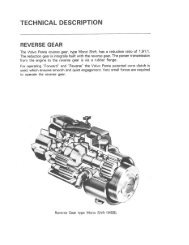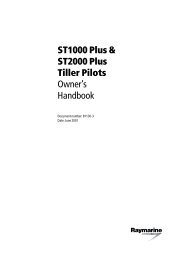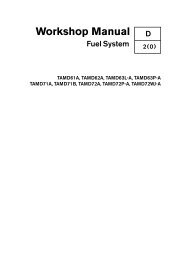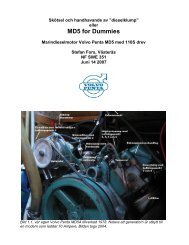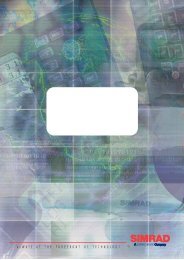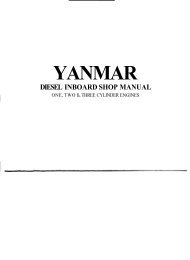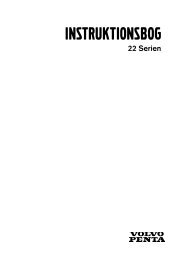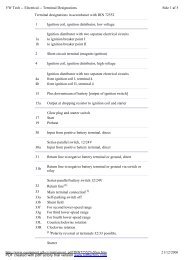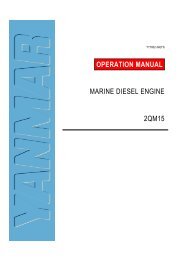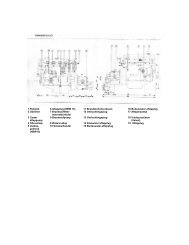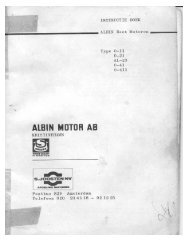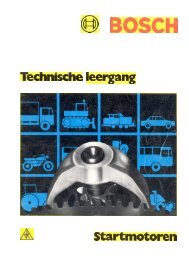Create successful ePaper yourself
Turn your PDF publications into a flip-book with our unique Google optimized e-Paper software.
Safety informationAlways use goggles when doing any workwhere there is any risk of splinters, grindingsparks, acid splash or other chemicals. Youreyes are extremely sensitive, injury could causeblindness!Avoid skin contact with oil! Long-term or repeatedskin contact with oil can make your skin dryout. The consequence is irritation, dry skin, eczemaand other skin disorders.Used oil is more hazardous to health than newoil. Use protective gloves and avoid oil-soakedclothes and rags. Wash regularly, especially beforemeals. Use special skin cream to avoiddrying and facilitate skin cleaning.Most chemicals intended for the product (e.g.engine and transmission oils, glycol, petrol(gasoline) and diesel oil) or chemicals for workshopuse (e.g. degreasers, paints and solvents)are hazardous. Read the instruction on thepackages carefully! Always observe the safetyadvice (e.g. use of breathing protection, goggles,gloves etc.). Make sure that other personnelare not inadvertently exposed to hazardoussubstances, such as via the air they breathe.Ensure good ventilation. Handle used and surpluschemicals in the prescribed manner.Batteries must never be exposed to openflames or electric sparks. Do not smoke close tothe batteries. The batteries generate hydrogengas when charged, which forms an explosivegas when mixed with air. This gas is very flammableand highly explosive. A spark, which canbe formed if the batteries are wrongly connected,is enough to make a battery explode andcause damage. Do not move the connectionwhen you attempt to start the engine (risk ofarcing), and do not stand and lean over one ofthe batteries.Never mix up the battery positive and negativepoles when the batteries are installed. If the batteriesare wrongly connected, this can causesevere damage to the electrical equipment.Please check the wiring diagram!Always use goggles when charging and handlingbatteries. Battery electrolyte contains highlycorrosive sulfuric acid. If this comes into contactwith your skin, wash at once with soap anda lot of water. If you get battery acid in youreyes, flush at once with a generous amount ofwater, and get medical assistance at once.Be very careful when searching for leaks in thefuel system and testing fuel injectors. Use goggles.The jet which comes from a fuel injectorhas very high pressure and considerable penetrationability. Fuel can force its way deep intobody tissue and cause severe injury. Risk ofblood poisoning (septicemia).All fuels, and many chemicals, are flammable.Make sure that open flames or sparks can notset them alight. Petrol (gasoline), some thinnersand hydrogen gas from batteries are extremelyflammable and explosive when mixed with air inthe correct ratio. Do not smoke! Provide goodventilation and take the necessary precautionsbefore you start welding or grinding in the vicinity.Always have a fire extinguisher easily availablenear the workplace.Make sure that oil and fuel soaked rags, andused fuel and oil filters are stored in a safeplace. Oil soaked rags can self-ignite in certaincircumstances. Used fuel and oil filters are pollutingwaste and must be handed to an approvedwaste management facility for destruction,together with used lubrication oil, contaminatedfuel, paint residue, solvents, degreasersand wash residue.Stop the engine and cut the system current withthe main switch(es) before doing any work onthe electrical system.The clutch must be adjusted with the engineshut off.The existing lugs on the engine/reverse gearshould be used for lifting. Always check that thelifting devices are in good condition and thatthey have the correct capacity for the lift (theweight of the engine plus the reverse gear andextra equipment if installed).The engine should be lifted with a customizedor adjustable lifting boom for safe handling andto avoid damaging components on top of theengine. All chains or cables should be parallelto each other and should be as square as possibleto the top of the engine.If other equipment connected to the engine hasaltered its centre of gravity, special lifting devisesmay be needed to obtain the correct balanceand safe handling.Never do any work on an engine which justhangs from a lifting devise.3


